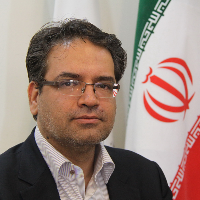Explaining the Cultural Quarter Model in the Historic Fabrics to Provide the Economic Development and Presence of Creative Industries (a Case Study of Laleh-zar St., Tehran)
Given that historic quarters as an integrated entity best represent the efforts of indigenous cultures to meet the past needs, their compatibility with the present needs and recognizing the opportunities available to them as an accepting capacity for cultural and economically productive functions are worthy of attention. Utilizing creative approaches in line with the historic fabrics adaptability to the new economy and conditions, through focusing on the cultural capital as a means of revitalizing historic neighborhoods and creating new economic activities to replace the declining uses or those being disappeared from the area, is the most significant necessity to Problem statement of the present research.
The use of innovative policies and creativity-based strategies for the presence of our country’s historic fabrics and neighborhoods in the competition arenas, aimed at the cultural-economic growth and development and neighborhood revitalization, is an approach whose absence is noteworthy within both relevant theoretical and applied fields.
This research based on an analytical and descriptive method to assess and measure the capabilities of historic fabrics, indexical contexts. Also, it examines the feasibility of a cultural quarter in a case study of Laleh-zar using the quantitative structural equation modeling through questionnaire and field observations and finally as Conclusion explains a model of historic-cultural quarters according to the priority of the actions.
The research findings prove the necessary solutions and measures based on the order of priority in the final model, the proposal and the importance of these relationships empirically.
-
Ranking the Semantic-Identity Challenges of Urban Landscape in the Urban Planning System of Iran
Hajar Asadpour, , Armin Bahramian *, Mahmoud Mohammadi
Journal of Iranian Architecture and Urbanism, -
Analysis of Socio-spatial Segregation of Ethnic Groups in the City of Bojnurd, Iran
Mohammadreza Zamiri, Mahin Nastaran *,
Motaleate Shahri, -
The Role of Urban Design in Neighborhoods Urban Regeneration Emphasizing on Social Sustainability
Abolfazl Toghraei *, , Morteza Mirgholami
Journal of urbanism Thought, -
Place Development and Environmental Quality Improvement of Urban Walk with a Grounded Theory Approach (Case Study: Hamadan Buali Urban Walk)
Mahsa Ardalan, Hassan Sajadzadeh *, Mohammadsaeid Izadi
Journal of Environmental Studies,




